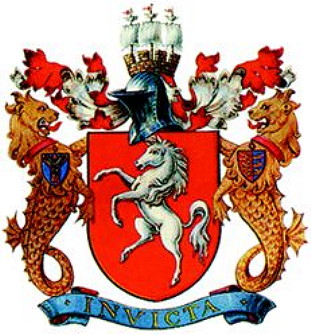טעקע:Arms-kent.jpg
Arms-kent.jpg (311 × 335 פיקסעל, טעקע גרייס: 51 קילאבייטן, טיפ MIME: image/jpeg)
היסטאריע פֿון דער טעקע
קליקט אויף א דאטע/צײַט צו זען דאס בילד אזוי ווי עס איז דעמאלסט געווען
| דאַטע/שעה | געמינערטע בילד | געמעסטן | באניצער | קאָמענטאַר | |
|---|---|---|---|---|---|
| איצטיקע | 10:05, 14 דעצעמבער 2006 |  | 335 × 311 (51 קילאבייטן) | Ermanon | Arms of Kent County Council, granted 17 October 1933. From [http://www.civicheraldry.co.uk civicheraldry.co.uk]], {{PD-BritishGov}} |
טעקע באַניץ
נישטא קיין בלעטער וואס ניצן די טעקע.
גלאבאלע טעקע־פארווענדונג
די פאלגנדע אנדערע וויקיס ניצן די דאזיקע טעקע:
- באניץ ביי af.wikipedia.org
- באניץ ביי azb.wikipedia.org
- באניץ ביי be.wikipedia.org
- באניץ ביי br.wikipedia.org
- באניץ ביי bs.wikipedia.org
- באניץ ביי ceb.wikipedia.org
- באניץ ביי de.wikipedia.org
- באניץ ביי en.wikipedia.org
- באניץ ביי en.wikinews.org
- באניץ ביי es.wikipedia.org
- באניץ ביי eu.wikipedia.org
- באניץ ביי fa.wikipedia.org
- באניץ ביי fr.wikipedia.org
- באניץ ביי he.wikipedia.org
- באניץ ביי incubator.wikimedia.org
- באניץ ביי it.wikipedia.org
- באניץ ביי ka.wikipedia.org
- באניץ ביי lld.wikipedia.org
- באניץ ביי lt.wikipedia.org
- באניץ ביי lv.wikipedia.org
- באניץ ביי nl.wikipedia.org
- באניץ ביי qu.wikipedia.org
- באניץ ביי ru.wikipedia.org
- באניץ ביי sd.wikipedia.org
באקוקן נאך גלאבאלן באניץ פון דער טעקע.



